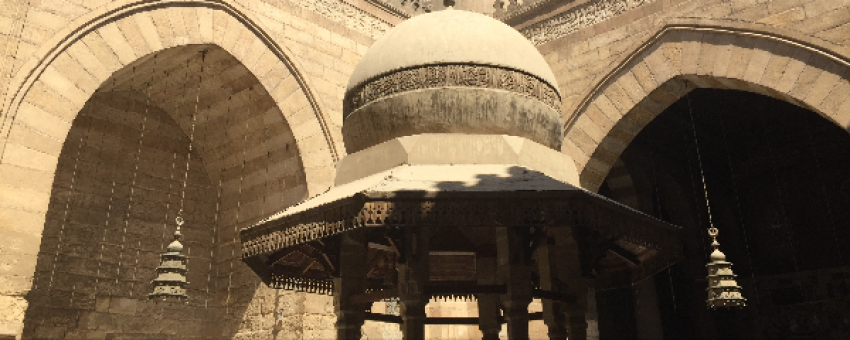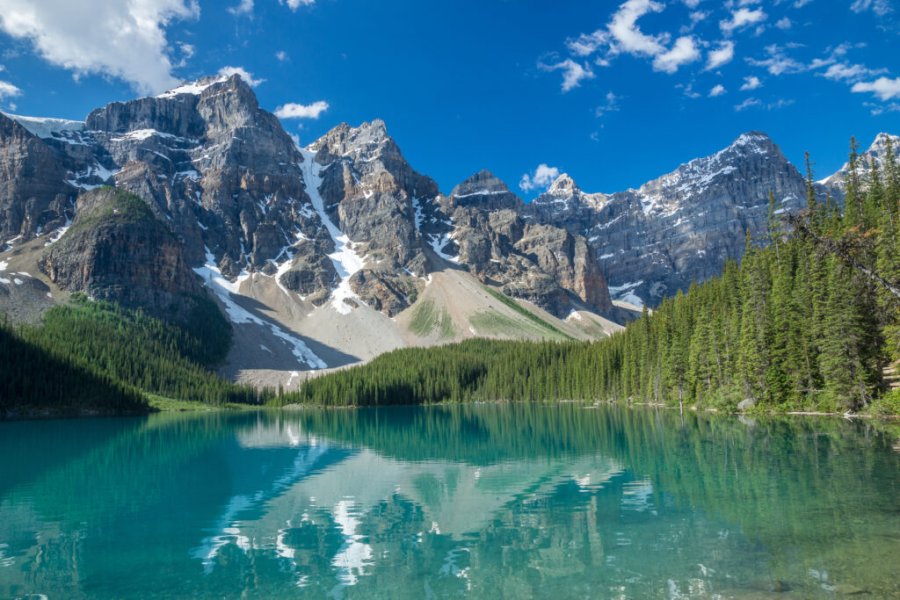A week to discover Cairo, Alexandria and Rosetta
Explore Cairo, a dynamic metropolis, off the beaten track. Discover the treasures of the past by visiting the iconic site of Giza, home to the three majestic Pyramids and the mysterious Sphinx. Don't forget to visit Saladin's citadel for an unforgettable historical experience.
Continue your adventure to Alexandria, nicknamed the "Pearl of the Mediterranean", where history spills around every corner thanks to its rich archaeological remains.
Explore Rosetta, a historic site where the Nile mingles with the Mediterranean, and discover the famous Rosetta Stone, whose deciphering of hieroglyphic inscriptions played a major role in the history of Egyptology.
Highlights of the trip
During your stay you can enjoy the following highlights: Culture / Heritage, Discovery, Off the beaten track, Travelling alone and travelling in a group.
Best months to go
The best time(s) to go is/are : Janvier, Février, Mars, Avril, Mai, Juin, Juillet, Août, Septembre, Octobre, Novembre, Décembre.
You can go all year round.
How to get there?
You can get there by Plane.
MAGIC EGYPTE
From 900€ / person
Travel suitable for :
Detail of the stay : A week to discover Cairo, Alexandria and Rosetta - 8 days
Arrival in Cairo
Welcome by our representative at Cairo airport.
Transfer to hotel.
Dinner and overnight at the hotel.
Memphis - Saqqarah - Dahchour
Steps: Memphis
Morning departure to visit the following historic sites:
Memphis: the oldest political and religious capital of unified Egypt for more than a millennium, and a leading religious center, built by King Menes in 3300 BC on the left bank of the Nile. The Memphis Museum houses the colossal statue of Ramses II, considered to be the finest representation of this monarch.
Saqqarah: Ancient Egypt's largest necropolis.
Famous for the step pyramid of the first king of the 3rd Dynasty, Djeser, which represents the first attempt at a pyramid. Built by Imhotep, it is considered to be the world's first stone construction.
Saqqarah owes its fame to the tombs of the nobles, or mastabas.
Scenes depicting daily life at the time are engraved on the walls of these tombs.
Dahshur: Two pyramids were built by King Snefru, founder of the 4th Dynasty and father of Khufu.
The Rhomboid Pyramid and the Red Pyramid.
These two pyramids provide an insight into the evolution of pyramid construction, illustrating the intermediate stage between the stepped pyramid (Saqqarah) and the pyramid-type pyramids on the Giza plateau.
Return to the hotel in the late afternoon. Overnight at hotel
Giza Plateau - Egyptian Museum
Steps: Le Caire
Breakfast at the hotel. Departure to visit :
The Giza Plateau: the flagship site of Egyptian civilization, home to the three famous pyramids - Khéops, Khéphren and Mykérinos - and the Sphinx. The Sphinx and the Great Pyramids represent the last of the Seven Wonders of the Ancient World, which have survived to the present day. Discover the entire site: the Sphinx, guardian of the Giza necropolis, and the Temple of the Valley.
The visit inside the pyramids is left to your own initiative, and is therefore not included in the package.
The Egyptian Museum: This immense museum, whose first curator was the Frenchman Auguste Mariette, will enable you to learn more about the history of Egypt. It is located downtown on Tahrir Square, in an ochre-red neoclassical building, perfectly suited to its exquisite collections. With two floors, a hundred rooms and 150,000 exhibits, it is the largest museum devoted entirely to ancient Egypt. One of the main rooms is devoted to the treasure of Tutankhamen, his tomb discovered in 1922 by the English archaeologist Howard Carter. You'll see all the marvels found in his untouched tomb, from the many jewels to the everyday objects used by nobles and commoners alike, taking you back 5,000 years in time.
Return to your hotel in the late afternoon.
Overnight at the hotel.
Cairo's medieval (Islamic) quarter
Morning departure to visit :
CairoCitadel: Erected in the 12th century by Salah Al-Din, known as Saladin, this famous citadel was built to protect against Crusader attacks and served as the royal residence of Egyptian rulers for over 700 years. The Citadel is made up of two mosques: the largest is that of Mohamed Ali, dating from the Ottoman period and built entirely in alabaster, certainly the most remarkable building and a masterpiece of 14th-century architecture.
Sultan Hassan Mosque and Madrasa: Considered the pearl of Islamic architecture.
Built by Hassan ibn El Nasser Mohamed ibn Qalaoun in 1356, to serve as both mosque and madrasa for teaching the four Sunni Islamic doctrines. An impressive entrance, the most magnificent of all Islamic monuments, over 36 meters high.
El-Rifa'i Mosque: Located just opposite the Sultan Hassan Mosque. Built in the early 20th century. Famous for the royal tombs it houses: Khedive Ismail, King Fouad, Egypt's last king Farouk and the Shah of Iran Mohamed Réda Bahlawi.
Stroll through the Khan El-Khalili Souk: the oldest market in the world, occupied by merchants since the 14th century.
Return to the hotel in the late afternoon.
Overnight at the hotel.
Cairo - Alexandria
Steps: Le Caire
Morning departure to discover the famous Mediterranean cosmopolitan city of Alexandria, some 230 km north-west of Cairo. Arrive in Alexandria and visit:
The Catacombs of Kom El-Chouqafa, dating from the 2nd century A.D., dug into the rock on 3 levels, are the largest tombs of the Roman era. Initially built for a single family, over the years they were enlarged and occupied by several families.
Pompey's Column and the Serapeum: This 26m-high granite column has proudly dominated Alexandria since the 3rd century. The Serapeum is a temple dedicated to the god Apis, represented as a bull.
The fortress of Qaitbay , built by Sultan Al-Ashraf Qaitbay in the 15th century in a medieval style typical of the military architecture of the Mamluk period. It stands on the site of the Alexandria lighthouse at the northern end of the eastern harbor entrance.
The Abu Al Abbas mosque is dedicated to the Andalusian Sufi saint Abu Al Abbas, who died and was buried here in the 13th century. Rebuilt in 1927 by Italian architect Mario Rossi, it is Alexandria's largest mosque.
Transfer to your hotel.
Overnight stay.
Alexandria
Steps: Alexandrie
Breakfast at the hotel. Departure to visit :
The Museum of Royal Jewels: A true tale of a thousand and one nights, this museum, housed in the palace of Fatma Al Zahraa, princess of the royal family, will enable you to admire unique pieces, each more precious than the last, including the jewels of Mohamed Ali's family, Queen Farida's crown, as well as tools and precious stone crockery. The museum itself invites you to daydream, with its richly decorated ceilings, stained glass windows and paintings, all inviting you to experience a magical moment.
The Library of Alexandria: One of the most terrible episodes in Egyptian history was the destruction of the Library of Alexandria, but in 2002, with the help of UNESCO, Egypt built the great library of the Mediterranean world on the site of the remains.
At the cutting edge of technology, it provides researchers and academics with the tools they need to maintain and advance the cultural and scientific position of the Middle East.
Overnight at hotel.
Steps: Rosette
After breakfast, departure for Rosette, about 90 km east of Alexandria (1h30 drive). Rosette makes its living from fishing and date harvesting, but fishing is the mainstay of the local economy.
After a journey of 6,000 km, the Nile flows into the Mediterranean Sea at its western mouth, ten kilometers north of Rosette. The town still retains its picturesque style, with tall, relatively narrow houses and facades adorned with moucharabieh windows. This beautiful city is located on the left bank of the western branch of the Nile. Strolling through the streets of Rachid is like stepping back in time. Admire the Abou Chahine Mill, with its huge wooden presses, and the Rosetta National Museum
Rosetta Fort: It was in this fort that the Rosetta Stone was found in 1799 by Napoleon Bonaparte's French soldiers. It was the study of this stone that enabled Champollion to decipher the hieroglyphic writing that had been forgotten for over a thousand years.
Return to Alexandria.
Overnight at hotel
Alexandria - Cairo - International departure
Steps: Le Caire
After breakfast, departure for Cairo.
Transfer to Cairo airport for your return flight.










